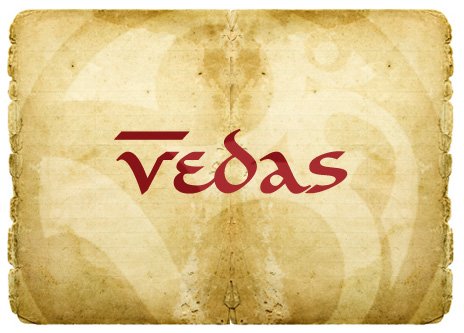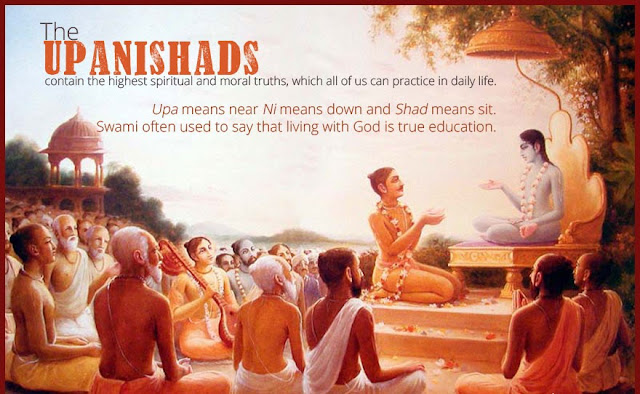Dating of The Vedas & Upanishads


If Vedas are understood in the sense of knowledge, then Vedas are eternal. There is no creation without the knowledge and thus knowledge can be understood to be co-existent with knowledge. If we move away from this generic definition of Vedas and ask this question for the specific Samhitas, we may able to talk of specific time periods based on the content of these Samhitas. For the sake of this short note on the dating of Vedas and Upanishads, we will keep dating of Atharva-Veda out of the scope, since that may require longer discussion.
The content of Yajurveda is essentially derived from Rigveda, albeit with some modifications, with the execution of Yajna in mind. The content of Samaveda is also derived from Rigveda, again with some modifications, as the Sukta or specific Rik are set to the music. In effect the dating of Rigveda, Yajurveda and Samaveda refers to dating of the Rigveda.
Rigveda does contain astronomy evidence however it is anything but straightforward and its interpretation followed by objective testing would require dedicated efforts. However, hydrology and morpho-dynamics of rivers evidence accumulated over last 100+ years has provided enough clues to assert antiquity of Rigveda (and by inference, antiquity of Yajurveda/Samaveda) beyond 24,000 years before present.
The mention of Shantanu/Devapi in the 10th Mandala of Rigveda tells us of the editing, recasting or of some addition to Rigveda around the Mahabharata time, i.e. 6th millennium BCE. The Mahabharata text validates this conjecture by stating that Ved-Vyasa, the author of the Mahabharata indeed expanded and reedited Vedas. Nadi-Sukta of the 10th Mandala alludes to diminished status of river Sarasvati as the grandest river and being replaced by river Sindhu as the prominent river. On the other hand, as one explores the other Mandalas of Rigveda, some of them refer to river Sarasvati as the grandest river (6, 3, 7, 4, 2). These descriptions can be me matched to specific time intervals of the last 100,000 years based on the hydrology and morpho-dynamics of rivers which lead to the inference that the oldest portions of Rigveda are older than 22,000 BCE.

On the other hand, dating efforts of Upanishads have not resulted with much success. This has to do with the fact that Upanishad portions themselves contain little to no evidence that can be employed for dating them. In rare cases, when such evidence exists, it is open to interpretations and thus results in multiple predictions. As an illustration, let us look at the evidence of Maitrayani Upanishad.
Maitrayani Upanishad is considered as part of the Samaveda. Prapathak 6:14 presents us with an astronomy evidence:
Maitrayani Upanishad 6:14
द्वादशात्मकं वत्सरमेतस्याग्नेयमर्धमर्धं वारुणं मघाद्यं
श्रविष्ठार्धमाग्नेयं क्रमेणोत्क्रमेण सार्पाद्यं श्रविष्ठार्धान्तं
One translation/interpretation is as follows:
Half of it is sacred to Agni: half, to Varuṇa. From the nakshatra Magha to half of Śravishṭhā (Dhanishtha) in the [sun’s southward] course is sacred to Agni. In its northward course, from Sarpa (nakshatra Ashlesha – Devata –Nagas/Sarpah)) to half of Śravishṭhā (Dhanishtha) is sacred to Varuna.
The above translation would lead to an approximate time interval of 2000 BCE.
However, it is equally important to realize that the assumption of the southward course assumed here is from Summer solstice to winter solstice. This need not be the only interpretation as many Vedic references refer to Sun’s journey in the southern hemisphere as referring to its southern journey or southward course, i.e. from the autumnal equinox to spring equinox when the position of the Sun is to the south of the equator. The support for such an interpretation can be found in the Maitrayani Upanishad itself.
Maitrayani Upanishad 6:33
पञ्चेष्टको वा एषोऽग्निः संवत्सरः तस्येमा इष्टका यो
वसन्तो ग्रीष्मो वर्षाः शरद्धेमन्तः स
शिरःपक्षसीपृच्छपृष्टवान्
Let us see what dating we arrive at if we assume the position of Magha at autumnal equinox (i.e. the entry of the sun in the southern hemisphere). To align the position of Magha with respect to the point of fall equinox leads us to the timing of 22000 BCE.
What this means is that sporadic references that are objectively testable do lead to timelines validated by hydrology/geology evidence of Rigveda.
DISCLAIMER: The author is solely responsible for the views expressed in this article. The author carries the responsibility for citing and/or licensing of images utilized within the text.
